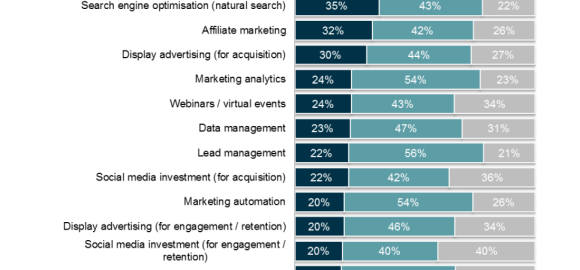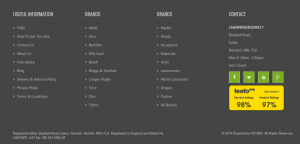Most marketers would agree that content marketing is critical to success in the online arena, yet few believe they can accurately measure ROI from content marketing efforts. Columnist Nathan Safran explores this discrepancy.

I recently came across a chart from Econsultancy and Oracle Marketing Cloud’s Marketing Budgets 2015 Report showing marketers’ perceived ability to measure ROI from their digital channels.
At the top of the ROI list is paid search — which, given its “put a quarter in the machine and get something back” framework, is not surprising. Down at the bottom of the list, in the second to last position, is content marketing, with only 16% of marketers describing their ability to measure ROI from this discipline as “good.”
Although it’s jarring to see it down at the bottom of the list, it is not surprising: content marketing ROI is the golden goose marketers have been chasing for years, and the latest data shows that they are not significantly closer today than they were before.
Content Marketing The Most Significant Digital Trend To Marketers
Given the distinct difficulty marketers still have in tying content to ROI, it would be easy to question the degree to which they still intend to use it. Yet despite the difficulty, it is still the most significant digital marketing trend, according to Smart Insights.

Results from a 2015 poll of Smart Insights readers
So, how can we explain the gap — no, the chasm — between the tiny number of marketers who say they can tie content marketing to revenue and the large number who insist that content marketing is by far the most important digital trend facing them this year? Are we witnessing the worst case of cognitive dissonance marketing has ever seen?
Marketers Understand That The Balance Of Power Has Shifted To The Buyer
I think the answer is explained best with a series of statistics about buyers’ interaction with content during their buying journey:
- According to Nielsen research commissioned by content marketing firm inPowered, consumers are increasingly turning to digital content, “including sources such as brand websites, user reviews, and third party expert content, when learning more about new products and services.”
- A GfK Group report from 2011 noted that 61% of consumers feel more positively about a brand after reading customer content.
- The same report showed that “custom media positively impacts purchase decisions,” with 65% of respondents saying that custom content helps them make better purchase decisions and 55% claiming that they’re more likely to becoming repeat buyers from brands that provide custom content.
- Similarly, a 2013 report by UK firm Seven found that 57% of consumers felt more positive toward brands that generate custom content, compared with just 10% who felt positively toward “advertising from brands” overall.
These statistics tell us that although marketers are uncomfortable with the extent to which they can map their content investment to ROI, they know that it is critical — in the digital age, buyers have been empowered to such a degree that they can do the lion’s share, if not all, of their research online without ever talking to a sales rep. Furthermore, this self-serve research process only continues to grow over time as buyer awareness increases and marketers increase the volume and quality of their content.
This imperative means that marketers will continue to publish content for their audiences, although one can imagine that the degree to which they do so can fluctuate up and down depending on which way the wind is blowing when it comes to their comfort level with uncertainty.
Where Does This Leave Marketers?
Where does this gap between the degree to which marketers can comfortably measure the ROI of their content investment and the obvious need to invest in content to satisfy the self-serve buying mentality leave us?
I think there are two factors marketers must be aware of as the way in which consumers research and buy online continues to evolve and marketers grapple with the ROI/need-for-content gap:
- Measurement Tools And Technology Evolve. Think how far we’ve come in only a few short years when it comes to what can be measured in digital marketing. Tools and technology will continue to evolve and bring marketers closer to being able to tie content to ROI.
- Marketers Must Become Comfortable With Being Uncomfortable. The truth is, even as tools and technology continue to improve, chasing the content ROI golden goose may, in fact, be a fool’s errand. This is because buyers come in contact with lots of content during the buying process: reviews, articles, social media, blog posts, and for B2B buyers, white papers and webinars. Short of investing heavily in content effectiveness studies every time new content is published, it is impossible to know the extent to which any one piece of content impacts the buying decision vs. any other.
At the end of the day, marketers may have to develop a degree of comfort knowing content marketing is critical to the buying process without knowing the exact formula to tie it to ROI. Knowing this will allow clear-headed thinking on their ongoing content investment.
Some opinions expressed in this article may be those of a guest author and not necessarily Marketing Land. Staff authors are listed here.
(Some images used under license from Shutterstock.com.)
Marketing Land – Internet Marketing News, Strategies & Tips
(1412)
Report Post







